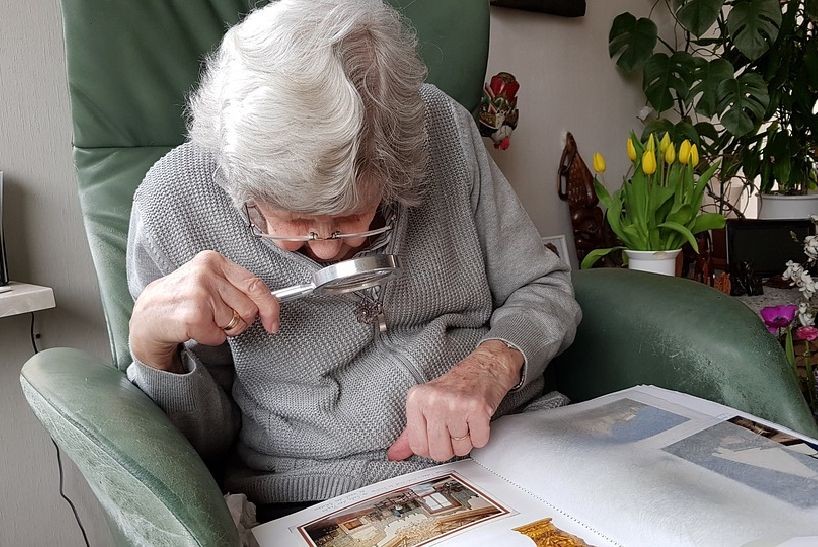Patient Journey: Home Care Today & Tomorrow
Specialist topics
Patient Journey: Home Care Today & Tomorrow
The Patient Journey describes the path from the first symptoms to specific, individual treatment. It encompasses the individual processes that the client goes through, but also what they feel in the process. The patient's subjective impressions and experiences are also part of the patient journey.

The patient's perception does not always coincide with that of the home care professionals. It is therefore all the more important to increasingly put yourself in the client's shoes. From a scientific point of view, it is not only the medical pathway that should be continuously improved. The client's sense of well-being on their patient journey must also be constantly optimized. Important points here include
- Cooperation between Spitex specialists and medical practice assistants
- integrated basic care
- maximum consumer safety with regard to medication
- Support from the field of robotics
We will look at all these topics in more detail below.
Spitex is currently facing these challenges
If we take a look at the population distribution in Switzerland in recent years, we see that the population is ageing. This is largely due to the ever-improving medical care that the Swiss are receiving. However, this is becoming a real challenge for Spitex.
As more and more people are getting older, the need for long-term care is increasing. As a result, the services of Spitex organizations are more in demand than ever. In 2014, almost 51,000 people aged between 20 and 64 used the services of a Spitex organization. By 2018, this figure had risen to around 90,000.
This corresponds to an increase of more than 75% in just four years. In addition, the older generations are increasingly preferring outpatient care and support. They want to stay in their own homes for as long as possible.
Increasingly complex care situations require specialized services, needs are becoming more individualized - the list is long. Appropriate solutions are needed to make the patient journey as pleasant as possible despite all these challenges. First and foremost is cooperation between Spitex specialists and medical practice assistants.
Spitex specialists and medical practice assistants work hand in hand

Specialists in Spitex organizations and GP practices pursue the same goal: optimal medical and nursing care for patients in their own homes. There are also various interfaces in day-to-day work, for example in the areas of medication and wound management.
Transparent communication is essential for this collaboration to work. Cooperation can only succeed if relevant information is exchanged regularly and contact can be established easily in the event of any uncertainties. Mutual support and respect for each other's work are just as important.
In medication management, for example, it must be clearly defined who is responsible for eliminating duplicate or even contradictory prescriptions. As a rule, this task is the responsibility of Spitex, which also assumes responsibility for dispensing.
The medication list must always be complete and up-to-date. A list from the Spitex IT system is usually available, but this is not always the case. This exchange is also possible by e-mail. It must also be clarified in advance who has the lead for wound management. If the Spitex specialists take care of wounds, they document them digitally.
They can send the collected data or sections of it directly to the GP practice. This can be done either on request or at predetermined intervals.
How can integrated care make the patient journey more pleasant?

As we have already mentioned, clients make significantly more use of outpatient care and support than their inpatient counterparts. However, the outpatient option is less suitable for clients who require a high level of care. Integrated care comes into play to enable clients to remain in their own four walls.
The aim here is to coordinate networking and cooperation between all players in the healthcare system in the best possible way. The aim is to optimize the patient journey. The focus here is on the specific need and the benefits that the client should derive from it. In addition, the specialist staff who can provide the required services most efficiently are also involved.
This interprofessional, client-oriented approach makes it possible to provide exactly the services that are needed at any given time, anywhere. Another important point is regional care networks and joint solutions. They offer basic outpatient and inpatient care from a single source. Examples of this include short stays in an inpatient organization after an operation and subsequent outpatient care by Spitex.
Integrated solutions also simplify the transition from care at home to inpatient care. During this phase, clients who are no longer able to stay in their own home gradually become accustomed to moving.
How exactly do professionals and clients benefit, and what is essential for collaboration?

Combining all these aspects results in a valuable synergy that optimizes the patient journey and also saves financial resources. There are also other advantages for service providers. The personnel market in the healthcare sector is highly competitive. The synergies created by integrated care offer, among other things, more comprehensive internal training opportunities. This results in more attractive jobs and better career prospects.
The client also benefits from a flexible, efficient and seamless supply and care chain. It is also easier to switch between the outpatient and inpatient sectors. The close, optimally coordinated cooperation between all service providers involved also increases the client's trust. But what exactly does it take for integrated care to function smoothly?
One point is quite obvious. Everyone involved must really want to work together and be prepared for constant open dialog. A shared vision with the benefit for the client at the center must be worked out. It should be geared towards long-term flexibility and further development.
A clearly structured process should be established, based on the experience of existing integrated care services.
The management team should also be defined at an early stage. All important service areas should be represented here. Not to be forgotten is the issue of digitalization, which makes collaboration between the various service providers considerably easier and faster. Professionals and clients benefit from this in equal measure.
What role does consumer safety play in the patient journey?

Safety always comes first. Older clients in particular often require polymedication. It is therefore essential to keep precise records. As soon as a Spitex organization provides a client with medication, it must be able to document who it was given to and when.
It must also be possible to trace who supplied the medication and when. It is a matter of course for every Spitex organization to also record when the client has to take the medication and in what quantity. In addition, the best possible checks should be made to ensure that the client adheres to these instructions.
Medication-related incidents are among the most common adverse events in the healthcare sector. This is not only evident from specialist literature, but has also been substantiated in scientific studies. The "doMESTIC 2016 - 2019 - Study of Medication Safety in Home Care" project also addressed the issue of medication safety. It identified three main problem areas:
- Fragmented communication
- Unreliable supply of medication after discharge from hospital
- Quality of discharge prescription in need of improvement
These are precisely the points that need to be addressed in order to optimize the patient journey. An important approach can be seen in the widespread introduction of electronic patient documentation. It is an important aid in closing communication gaps.
In terms of medication safety, it may well be worth including a pharmacist in the interprofessional Spitex team. The pharmacist carries out a systematic medication analysis and uses the client's complete discharge records for this purpose. In this way, the pharmacist significantly increases medication safety.
To what extent can robotics contribute to improving the quality of the patient journey?
Technological progress is one of the topics on everyone's lips in the 21st century. Robotics, which sounded futuristic not so long ago, is now even finding its way into the healthcare sector. There are various approaches in this area. For example, assistance robots have been developed to relieve the burden on care staff and give clients a degree of freedom.
Such robots are able to perform the same tasks over and over again. For example, it can pick things up from the floor or remove the client's socks. The developers initially concentrated on use in stationary organizations. Nevertheless, they expect rapid development from which Spitex specialists and their clients can also benefit.
Using robots to combat loneliness
Robots are also already being used in some cases to care for clients with dementia. Here, it is much less about relieving them of everyday tasks and more about providing companionship. The robots are intended to build a kind of emotional bridge. They help the client to express their feelings and project them onto someone or something.
The use of these robots takes on particular significance in view of the fact that more and more older people are feeling lonely. This does not necessarily mean that they have no social contacts. What they often lack, however, are close people to whom they can confide openly. Clients who have no family members report this in particular.
Spitex specialists cannot be present around the clock to keep them company. Particularly in view of the increasing shortage of skilled workers, the time they can spend with clients will probably even be reduced. This is precisely where robots can help. The technical assistants also encourage movement - an important factor for clients of all ages.
Professionals vs. robots: who will win the race?

Despite different approaches, there is agreement on one point: robots cannot replace individual care by a specialist. The needs of each client depend on the situation, and the sequence of a fixed program does not offer the flexibility that is then required. Also, contact and communication with a robot is of course not comparable to that between two people.
Nevertheless, robots can provide helpful support as long as the clients accept them. Generations that have come into contact with modern technology since childhood are likely to recognize robots as a valuable aid.
If this is not the case, clients may be skeptical or even fearful of robotics. In this case, it is important to introduce them to the technology with a great deal of sensitivity.
OPAN® as a helping hand within the patient journey
We at OPAN® have also made it our mission to play an active role in optimizing the patient journey. That's why we make it as easy as possible for you to find a suitable Spitex organization for yourself or your relative. In the first step, simply enter your zip code and any Spitex organizations in your area will appear. Now you have the choice.
Once you have made your decision, simply enter your or your relative's name, health insurance company and treating doctor. We at OPAN® transfer your data immediately - regardless of the business hours of the selected Spitex organization - and guarantee maximum security. Within a short time, you will receive feedback from a Spitex representative and discuss the next steps together.
Would you like to find out more about OPAN® or do you need help finding a suitable Spitex or registering? Contact us, we will be happy to advise you.
